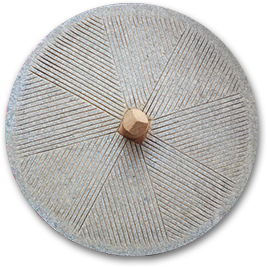History of matcha
century
618-907
The first record of Tea dates back to the Tang dynasty in China between 618-907. The Tang dynasty was in the later stages of the feudal society. This is where power, culture, and economics started to bloom in China. The popularization of tea spread all throughout China and became such a normal daily activity. Once tea reached this status, China was able to start taxing tea and it flourished the economy. A man named Lu Yu (733-804) wrote a book about tea and it had such a extraordinary impact of the Chinese tea culture. During this time, only the very rich in Japan, could have tea brought from China to Japan. Even then, tea leaves were only used as medication in Japan during the Tang dynasty.
century
1141-1215
Myoan Eisai (1141-1215) started the Rinzai school of Zen Buddhism in Japan. This was the first Zen temple in Japan. Eisai was a master of the art of Zen. In 1191, he returned back to Japan from his studies in China and brought back tea seeds with him. While in China, he learned a method of serving tea by using powdered tea, hot water, and stirring. Eisai popularized the idea of serving tea to the Samurai society. He preached that tea would improve your physical and mental health. Three years before he died, Eisai wrote a book called Kissa Yojoki, a book about tea.
century
1200-1253
After Eisai passed, a man named Dogen (1200-1253) a disciple of Eisai. He was a patriarch of the Soto sect of Zen Buddhism in Japan. Dogen went to China for studying Zen and the art of Tea. After returning to Japan in 1227, he brought utensils that he used in China. Dogen would teach tea ceremonies in Eiheiji , a temple that he himself built in Fukui Prefecture.
century
1271
In 1271, about 50 years after Eisai popularized the tea ceremony and culture, a Buddhist Monk named Kohken planted the first tea plant in the mountain side of Obuku around Ujitawara. Uitawara was a prime location for growth of tea because of the balanced climate and location near streams. This allowed the soil to feed the tea plants plenty of healthy minerals to grow strong.
century
1423-1502
A man named Murata Shuko (1423-1502) moved to Kyoto, Japan to study Buddhist Priesthood by Zen master Ikkyu Sojun (1394-1481). He studied under Ikkyu about 8 years from 1474 until Ikkyu died. Murata life completely changed when he came to the realization that tea ceremony had the ability to change your life. He believed by practicing tea ceremony could lead to an Enlightenment.
century
1502-1555
A man named Takeno Joo (1502-1555), a business man took Murata's concept of Tea and developed his theory even further. In his mid 20's, Joo moved to Kyoto to study Poetry. At this time, Joo wanted to change the image of the tea ceremony. Joo was a very wealthy business man but he didn't like the idea of using expensive tools to create tea. He began to change the tea house made by Shuko and gave it more simple daily life items.
century
1522-91
Takeno had a amazing disciple named Sen Rikyu (1522-91). Although, Rikyu was already mastering the art of Tea before studying under Takeno at the age of 19 in Sakai. Later Rikyu moved to Kyoto to study Zen at Daitokuji under Abbot Kokei. After studying , Rikyu incorporated a less judgmental essence of the tea ceremony with Zen. Rikyu believed that everyone is the same. In fact, Rikyu made the door to the tea room so small that everyone must crawl to enter. Everyone is equal with each other and everything inside the tea room. His ideas and views became what are now known as the Japanese tea ceremony today. Rikyu became one of the most influential figures in the history of Japan.
century
At this time, tea farmers began to cover the tea leaves with the Tana canopy. They practiced this method to block out the sun from absorbing to much sunlight. It's important to note that these are the same practices used for Gyokuro and Matcha green tea today.
century
The origin of Matcha idealism began in the 16th century. Although, there was inconsistencies with soil health and fertilizers in the 16th-18th centuries. It wasn't until the 19th century Matcha began to taste like Matcha in Japan now.
century
The first 100% organic Matcha farm was created in Ujitawara . Organic Matcha is such a relatively young idea. Tea farmers started growing organic Matcha in 1975 during the Showa era. Organic tea farming is not easy and only a handful of tea farms are 100% organic. In the last 40 years, organic farming as come such a long way. Tea farmers are striving to get organic Matcha to appear, smell, and taste like non-organic Matcha.
century
In present day Japan, Matcha farmers still use the same traditional processes from the sun shading to stone grinding. Fortunately with the advances in technology and product safety, Matcha will only get better as time goes on.


